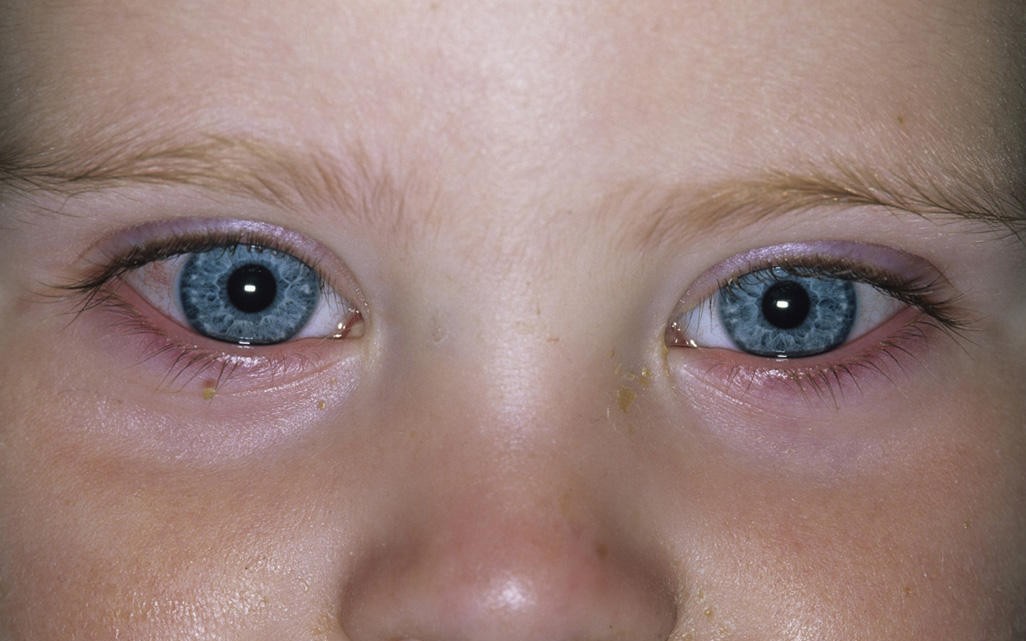As newborns cannot tell their parents about eye discomfort or other premature symptoms of an eye problem, you need to be watchful for detectable signs of any such condition.Common eye infections in newborns given below
Puffy eyes
Periorbital cellulitis, also known as puffy eyes, infects the eyelid and tissues present around the eyeball. It generally affects only one eye and doesn’t pass to the other.
Infection-causing bacteria (such as staphylococcus or streptococcus) which may be fetched into the eyelid by a cut or a bug bite around the eye, cause puffy eyes.
Call the doctor immediately, if you notice any of these characteristic symptoms in your child:
- Redness in the white of the eye or around the eye
- Puffiness in the eyelid, the white of the eye, or near the eye
- The eye may also become tender, and your child may get a fever.
Possibility of having vision problems or eye pain is less, though a bit of discomfort is expected.
It’s a severe condition but is completely treatable with oral or injectable antibiotics and drugs like acetaminophen or ibuprofen to relieve pain and bring down any fever. (Babies under 12 months of age need to be specially evaluated for infection and make a short stay in hospital.)
Even if your child’s condition starts to improve, make sure he or she completes the entire course of medications so that the infection doesn’t recur.
Moist eyes
Moist eyes are characterized by watering eyes without stickiness and crusting of the lids.
Usually, no treatment is required for watering eyes as they often improve naturally. You can massage the tear ducts of your neonate to help remove tears that have accumulated in the upper part of your baby’s tear duct and to encourage the development of tear duct. Start by applying light pressure with your first (index) finger and gently massaging from the corner of your little one’s eye in the direction of their nose. Repeat this several times a day for about two months. Don’t forget to wash your hands before massaging.
You can also dip a cloth in warm water, wring it and hold it against your baby’s eye. This may stimulate the tears to drain out. If your baby has an eye infection (such as conjunctivitis), antibiotic eye drops may be prescribed by the doctor.
Sticky eyes
Sticky eye is characterized by a white or yellow discharge at the inner corners of the eyes, making the eyelids stick together. Sticky eyes are a consequence of blocked tear duct. Sticky eye is not a serious condition and can be treated at home. But, if the condition doesn’t improve, there may be chances that the child has picked up a bacterial infection during birth. In this case, a medical treatment is required.
As a part of home treatment, you can use a cotton ball moistened in saline solution to swab your child’s eye tenderly from the inner corner to the outer corner. Use a fresh moistened cotton ball for each time you wipe your baby’s eyes.
Once you have bathed the eye open, make use of a dry cotton ball to dry it, starting from the inner corner towards the outer corner, the similar way you bathed it. You may need to carry out this each time you nourish your baby if their eye is severely sticky. If the cause behind the sticky eye is bacteria, then antibiotic eye drops are useful in improving the situation. Ask the doctor for more information.
Conjunctivitis
Neonatal conjunctivitis makes the eye of the newborn turn red. It may be caused by irritation, infection, or a blocked tear duct. Newborns with symptoms of conjunctivitis (pink eye) should see a doctor right away. The common symptoms of conjunctivitis include puffiness, redness, and tenderness in eyes.
The most common types of neonatal conjunctivitis along with their treatments are as follows:
- Inclusion (chlamydial) conjunctivitis: The cause of inclusion conjunctivitis is the bacterium called Chlamydia trachomatis. The treatment is generally done with oral antibiotics.
- Gonococcal conjunctivitis: Neisseria gonorrhoeae, which a mother with untreated gonorrhea (a sexually transmitted infection) can pass to her baby during childbirth, causes this kind of conjunctivitis. The treatment is performed with intravenous (IV) antibiotics.
- Chemical conjunctivitis: As this type of conjunctivitis is caused by chemical irritation (by eye drops given at the time of birth to prevent bacterial infections), treatment is usually not required and the condition generally improves in 24 to 36 hours.
- Other bacterial and viral conjunctivitis
Antibiotic drops or ointments for the eye are generally given to treat conjunctivitis caused by bacteria other than Chlamydia trachomatisand Neisseria gonorrhoeae. For both bacterial and viral conjunctivitis, a warm compress to the eye is helpful in alleviating puffiness and irritation. Make sure your hands are clean while dealing with your baby’s eyes.










